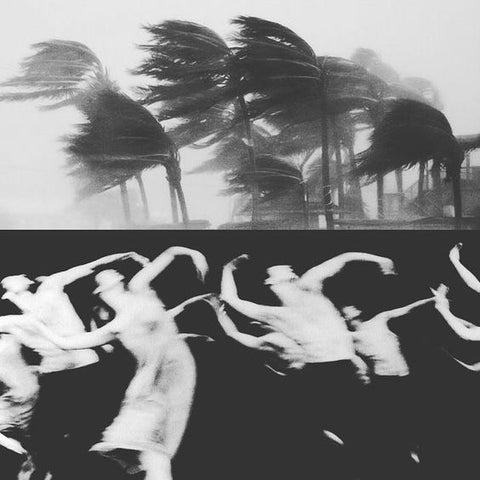In the ancient science of Ayurveda, Vata is one of the three doshas governing the human body. It is comprised of the elements air and ether (space), manifesting as the force responsible for movement, creativity, and vitality. When balanced, Vata fosters enthusiasm, adaptability, creativity, imagination, intuition and feels social wanting to connect with others. However, an imbalance in Vata can lead to nervous system disturbances, fatigue, excess dryness, and inconsistency in both life and the body.
What it looks like to be Vata Dominant:
Vata is known as “that which moves things” it is kinetic energy. Physically, it is the nervous system, breath, elimination and the movement of thoughts. Vatas embody pure expression and enthusiasm for life. They make wonderful creators, public speakers and healers.
- Slim frame, prominent bone structure
- Has a hard time putting on weight
- Dry skin
- Fine hair, brittle nails, small eyes
- Constipation or gas when your digestion is off
- Premature wrinkles
- Known to be spacy or air-headed
- Very creative, flexible minded and intuitive
- Speech is fast, sometimes nervous or airy tone
- Capable of original thought, can be a creator, inventor, musician
- Quick learner when focused
- Crave airy foods like chips, crackers, toast
- Tends to multitask
- When imbalanced you feel nervous, fear, anxiety
- Naturally drawn to spiritual practices
- Dabble in mind-altering drugs
- Deep intuition
- Resting heart rate ranges between 80-100 bpm
A Balanced Vata:
- Healthy digestion
- Consistant, predictable elimination
- Consistent, predictable menstrual cycles
- Immune system is in optimal state
- Zest for life, feeling empowered and inspired by life around you
- Effortlessly creative and naturally expressive
- Feels social and enjoys connection
- Mind feels awake and open
- When worry or anxiety arises, you notice it and take time to slow down

Recognizing an Imbalanced Vata (needs grounding):
Identifying an imbalanced Vata is crucial for restoring harmony. Some signs of an aggravated Vata dosha include:
-
Physical Symptoms: Dry skin, constipation, bloating, irregular digestion, joint pain, restlessness, fatigue, and susceptibility to cold.
-
Mental and Emotional Signs: Anxiety, nervousness, scattered thoughts, difficulty focusing, insomnia, and mood swings. Feels overworked or exhausted yet cannot relax. Hard time making decisions. Feels hypersensitive, easily effected by outside events / opinion of others.
-
Spiritual Disruptions: Lack of grounding, feeling disconnected, wavering beliefs, and a sense of being uncentered or unrooted. Falls asleep at a regular time but wakes up abruptly between 2-3am.
Pacifying Vata Dosha:
To pacify an aggravated Vata dosha we can implement various nutritional and lifestyle Ayurvedic Practices. Vata represents coolness, lightness and dryness so we seek to balance those qualities with dense and warm practices.
Nutrition Recommendations for Balancing Vata:
Warm and Nourishing Foods: Opt for cooked, warming foods like soups, stews, grains (like rice and quinoa), root vegetables, ghee, and nuts to ground Vata.
Spices: Vatas are pacified through grounding and warming spices like cinnamon, cardamom, cumin, ginger, cinnamon, salt, cloves, mustard seed and black pepper. These spices can be found in our Magic nootropic blend and our Mystic ceremonial cacao.
Hydration: Sip warm herbal teas (like ginger or cinnamon) and warm water throughout the day to maintain hydration and support digestion.
Healthy Fats and Oils: Incorporate lots of healthy fats from sources like avocados, olive oil, and sesame oil in each meal to lubricate the body.
Spices: Include warming spices such as ginger, cinnamon, cumin, and turmeric to aid digestion and kindle digestive fire (Agni).

Balancing Each Layer of Vata:
Physical Level:
One of the most impactful physical practices for a Vata is regular self-massage (Abhyanga) with warm oils like sesame, almond or jojoba. It is also incredibly impactful for a Vata person to maintain a consistent routine. If you are a Vata person it is likely that you wake up at 6am one day and 9am the next. Or eat meals whenever you can fit them in and spend 3 days in a row working 12 hours per day to then spend the next few days either only relaxing or filling your calendar with social obligations. Sound familiar? This is because an out of balanced Vata tends towards inconsistency. Creating a consistent routine can be simple. Start with something that is easy to commit to like waking up at the same time every day, being consistent with meal times or committing to working within certain hours or dedicating a certain time to physical movement or self care. Once you have mastered one, start to implement others and watch as your nervous system becomes more resilient and your enthusiasm for life is unobstructed from fear and anxiety.
For physical movement practices engage in gentle yoga, heated yoga or Tai Chi to carry peace and warmness throughout your days.
If working with a certified Ayurvedic Practitioner, consider practices like Basti (a type of Ayurvedic enema) for specific Vata-related issues such as constipation or joint pain.
Mental Level:
Many anxious Vatas feel as though we have to constantly be filling our time doing something valuable. It is acutely important as the Dosha connected to the etherial realms, that we create space for stillness and silence. There is wisdom for us there. There is power in our ability to listen. Practice mindfulness through meditation, deep breathing exercises (pranayama), and calming activities like journaling or spending time in nature. Scheduling regular breaks and maintaining a peaceful environment also aids in balancing Vata on a mental level.
Spiritual Level:
Cultivate a sense of stability and connection through practices such as yoga asanas that focus on consistent grounding postures, chanting, and nurture a routine that honors spiritual practices. Spending time in introspection and engaging in activities that foster a sense of purpose and connectedness with oneself and the universe can deeply nourish the spiritual aspect of Vata dosha.
The Etherial Vata
Understanding and harmonizing the Vata dosha involves embracing warmth, stability, creativity, and nourishment in all aspects of life. By keeping your body warm and oiled, maintaining a calm mind, and connecting with spirit you can embody the potent imaginative, awakened, intuitive qualities of Vata. My biggest takeaway message for Vata: Create space and stillness to listen. Dance with a smile on your face and on your heart.
Always consult an Ayurvedic Practitioner for personalized guidance in balancing your Doshas and promoting overall health and wellness.

